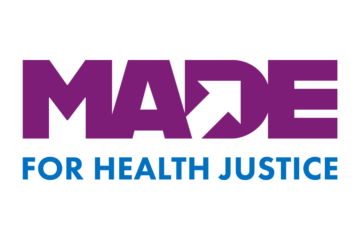Republished from Health Affairs (March 19, 2020) with permission from the authors. See the original article on Health Affairs.
By Brian C. Castrucci and Monica Valdes Lupi
In President Donald Trump’s first news conference about COVID-19, he was asked whether the COVID-19 outbreak would make him reconsider proposed cuts to our nation’s public health infrastructure. “I’m a businessperson,” he answered. “I don’t like having thousands of people around when you don’t need them. When we need them, we can get them back very quickly.” The implication: that responding to public health crises does not require any long-term investment or deliberate advance work and preparedness. It could easily be handled, he seemed to suggest, on the fly and on the cheap.
These comments demonstrate a stunning lack of knowledge of how government funding works and the specialized expertise needed to prepare for and respond to a threat such as COVID-19. They are also insulting to the thousands of public health officials on the front lines of the coronavirus response who are risking their safety to protect the health of their communities.
In some businesses, it may be easy to staff up when necessary, but the public health field does not have an endless supply of people or dollars to pull from when emergencies arise. We don’t wait until there’s a fire to start hiring firefighters. When there is a fire, we expect firefighters to show up with the right number of people and the right equipment. Our public health system should be no less prepared. The president’s erroneous comments are just the latest signal from an administration that remains indifferent to our public health infrastructure, a fact that threatens our ability to weather this latest test.
The president’s words would be less distressing if he were alone in his misunderstanding and neglect of public health. Articles from the New York Times, the Washington Post, and the Wall Street Journal on the importance of governmental public health and the need for increased funding are coming too late. Political leaders from both parties, media professionals, business leaders, and the public have ignored the calls for additional funding and concern about a shrinking workforce from national public health advocacy organizations. Since 2008, local and state governmental public health agencies have lost nearly a quarter of their workforce, about 50,000 jobs. Even more alarming, in the 2017 Public Health Workforce Interests and Needs Survey, nearly half of local and state governmental public health employees said they plan to leave their organization by 2022.
It is now clear that we are not as prepared as we should be. Our neglect of the public health infrastructure and repeated cuts to public health funding mean necessary staff or supplies aren’t available. It slows the response. It means we are always playing catch up. With each cut, we take a greater risk with our nation’s health. With the president perpetuating fundamental misunderstandings of the public health workforce and devaluing the role of public health in general, we risk more illnesses and deaths from COVID-19 and other threats than we would with a fully funded response led by public health experts.
While the $8.3 billion emergency funding package passed by Congress and signed by the president on March 6 is needed, less than $1 billion will go to local and state health departments. These funds, while important, won’t repair the damage done to the foundations of our nation’s public health infrastructure. In 2019, public health experts estimated that state, territorial, local, and tribal governmental public health agencies needed $4.5 billion, approximately 0.6 percent of the proposed fiscal year 2021 defense budget, to effectively promote health and protect national security.
Prominent leaders are already calling for consistent funding for local and state health departments, but will it happen? Similar calls came during the H1N1, Zika, and Ebola outbreaks. But as the number of cases decline, Americans slowly slide back into complacency, media attention ebbs, and the interest and political will to strengthen our public health system dissipates.
However, unlike these past outbreaks, the spread and apparent ease of transmission of COVID-19 has already caused businesses to close, crashed the stock market, and disrupted our daily lives with school closures, cancelled events, and increased social distancing. Maybe the disruption caused by COVID-19 will help us recognize that our nation’s local and state public health agencies are more than rapid-response systems, that they need funding to build preparedness teams and protocols. Maybe this will finally be enough to help us recognize that continued cuts to public health infrastructure jeopardize not only our health but also our economy and our very way of life. We must capitalize on the nation’s shared concerns to fortify our public health infrastructure and stay committed to it even after the nation’s attention moves on.





